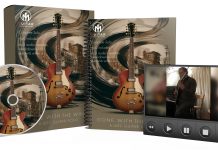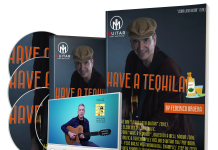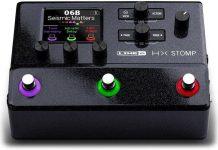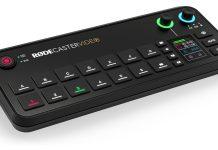This post may contain affiliate links. As an Amazon associate, Google associate as well as associate for other programs, Guitar & Music Institute may earn commissions from qualifying purchases.

Creating a mailing list is an essential strategy for any musician who wants to share their talent with the world. Whether you’re a guitar player or another type of artist producing recordings, lessons, or videos, a dedicated mailing list allows you to connect with your audience on a deeper level. You’ll learn why this marketing tool stands the test of time and discover practical steps to build and maintain your list. It’s not just about growing your contacts—it’s a pathway to more leads and a potentially lucrative income stream that supports your creative journey. Have you ever thought about how you can keep your fans engaged and up-to-date with your latest music, lessons, or videos? If you’re a guitar player, or indeed, any kind of musician who creates recordings, lessons, audio, or video, creating a mailing list can be your secret weapon. Of all the marketing tools available, creating a mailing list remains the best way to engage with people who get to know and follow you. This article will explore why and how to create a mailing list and how it can help you gain more leads, create more contacts, and ultimately, create a new and powerful income stream for your creative work.
Why Every Musician Should Have a Mailing List
Creating a mailing list is not just about collecting email addresses. It’s about building a community of loyal fans who are genuinely interested in your music. When someone subscribes to your mailing list, it means they want to hear from you frequently.
Direct Communication
Having a mailing list allows you to communicate directly with your fans. Social media algorithms often determine who gets to see your posts, but with a mailing list, you control the communication. It ensures that your message gets to every subscriber’s inbox.
Better Engagement
Emails feel more personal. By crafting engaging emails, you can interact with your fans more intimately. This better engagement often translates to higher sales and more loyal fans.
Data Ownership
When you have a mailing list, you own the data. You’re not at the mercy of changing social media algorithms. Owning the contact information of your subscribers ensures that you have direct access to your fan base.
Monetization Opportunities
A mailing list can be a powerful tool for monetization. You can use it to promote your merchandise, concerts, new releases, and even your music lessons. The possibilities are endless.
How to Create a Mailing List
Creating a mailing list may sound daunting, but it’s actually a straightforward process. Here’s a step-by-step guide to get you started.
Choosing the Right Email Marketing Service
The first step is to choose an email marketing service that fits your needs. There are many options available, each with its own set of features and pricing plans.
| Service | Features | Pricing |
|---|---|---|
| Mailchimp | User-friendly interface, templates, automations | Free tier, paid plans starting at $10/month |
| ConvertKit | Great for musicians and creatives, automation, landing pages | Free tier, paid plans starting at $29/month |
| Aweber | Autoresponders, templates, analytics | Free tier, paid plans starting at $19/month |
| Sendinblue | Unlimited contacts, marketing automation | Free tier, paid plans starting at $25/month |
Building a Subscription Form
Once you’ve selected your email marketing service, you’ll need to build a subscription form. This form will be the gateway for your fans to join your mailing list.
- Designing the Form: Make it simple and attractive. Most services offer customizable templates that you can use.
- Content: Include a strong call to action. Let your fans know what they will get by subscribing—exclusive content, early access to releases, discounts on merchandise, etc.
- Placement: Place the form in strategic locations on your website, blog, social media pages, and even at the end of your YouTube videos.
Offering an Incentive
People are more likely to subscribe to your mailing list if they get something in return. Here are some incentive ideas:
- Free Download: Offer a free download of a song, a lesson, or an eBook.
- Exclusive Content: Provide access to exclusive behind-the-scenes videos or early access to your latest releases.
- Discounts: Offer discounts on your merchandise or tickets to your gigs.
Promoting Your Mailing List
Now that you have your subscription form and incentive ready, it’s time to promote your mailing list.
Social Media
Your fans already follow you on social media, so this is a great place to start. Create posts and stories encouraging your followers to subscribe. Don’t forget to include a link to your subscription form.
Website
If you have a website, make sure to prominently feature your subscription form. A pop-up or a banner can be very effective in capturing email addresses.
Live Gigs
At your live performances, take the opportunity to promote your mailing list. You can mention it during your set, and even have a sign-up sheet at the merchandise table.
Collaborations
Collaborations with other artists can help you reach a new audience. Mention your mailing list whenever you collaborate or feature another artist on your platform.
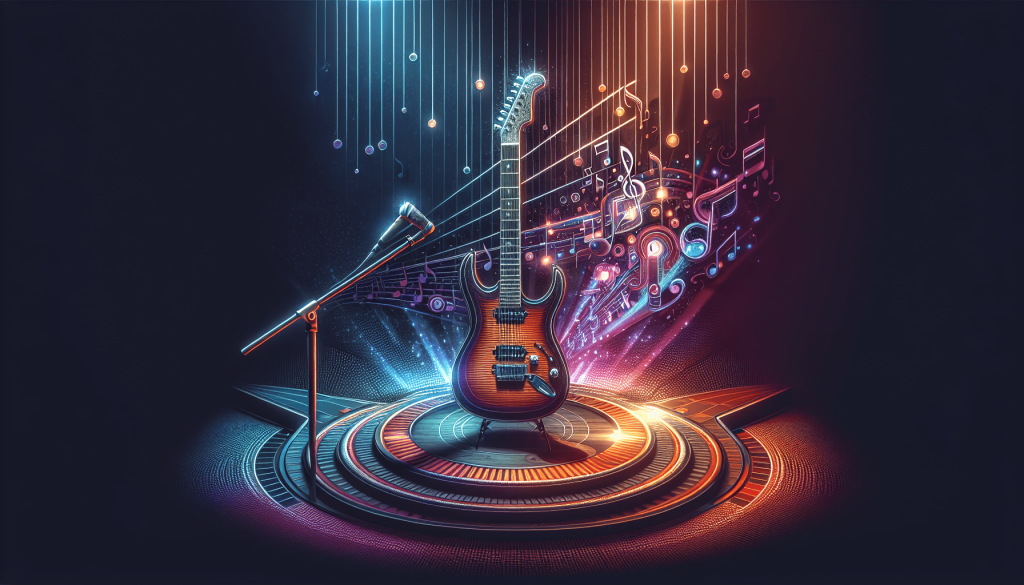
Creating Quality Content for Your Mailing List
Your mailing list is only as good as the content you send to it. Here’s how to keep your emails engaging and valuable.
Segmentation
Not all subscribers are the same. Some might be more interested in your tutorials, while others might be more into your live performances. Segmenting your list allows you to send more personalized content.
| Segment Name | Interests | Sample Content |
|---|---|---|
| Tutorial Lovers | Guitar lessons, techniques | Step-by-step guitar tutorials |
| Concert Enthusiasts | Live performances, gig updates | Upcoming concert dates, ticket links |
| New Release Followers | New music releases, album updates | Sneak peek of upcoming songs |
Frequency
Decide how often you want to send emails. Consistency is key, but you don’t want to overwhelm your subscribers. A bi-weekly or monthly newsletter is usually a good starting point.
Content Ideas
- Behind-the-Scenes: Share what goes on behind the scenes of your music-making process.
- Exclusive Previews: Give your mailing list subscribers exclusive previews of your new songs or videos.
- Personal Stories: Share personal stories or experiences related to your music. This helps create a deeper connection with your audience.
- Tutorials and Tips: If you offer lessons or tips, include these in your emails. It provides added value.
- Fan Spotlights: Feature your fans in your emails. This could be a fan of the month or stories shared by your fans.
Automating Your Mailing List
Automation can save you a lot of time and effort while ensuring that your subscribers receive timely and relevant content.
Welcome Emails
A welcome email is the first email your subscriber receives. Make sure it’s warm, welcoming, and sets the tone for what’s to come. Include links to some of your best content, social media profiles, and ways they can get involved with your music.
Drip Campaigns
A drip campaign is a series of automated emails sent based on specific triggers. For example, when someone subscribes to your mailing list, they might receive a sequence of emails introducing them to your best work, sharing stories, and eventually leading them to make a purchase or attend a gig.
Re-engagement Campaigns
Sometimes, subscribers become inactive. A re-engagement campaign can help you win them back. Send an email reminding them what they’re missing and perhaps offer a special incentive for re-engaging.

Measuring the Success of Your Mailing List
It’s important to track the performance of your mailing list to understand what’s working and what needs improvement.
Open Rates
Open rates tell you how many subscribers opened your email. A good open rate varies by industry but aiming for 20% or higher is a good benchmark.
Click-Through Rates (CTR)
The CTR tells you how many people clicked on a link in your email. A higher CTR means your content is engaging and relevant to your audience.
Conversion Rates
Conversion rates measure how many subscribers took a desired action, such as purchasing a product, signing up for a lesson, or attending a gig. This is one of the most important metrics to track.
Subscriber Growth
Keep an eye on how fast your mailing list is growing. This can help you understand the effectiveness of your promotional efforts.
Unsubscribe Rates
While it’s normal to have some unsubscribes, a high unsubscribe rate might indicate that your content is not meeting your audience’s expectations. Aim to keep your unsubscribe rate below 1%.
| Metric | Description | Good Benchmark |
|---|---|---|
| Open Rate | Percentage of subscribers who opened your email | 20% or higher |
| Click-Through Rate (CTR) | Percentage of email recipients who clicked on a link | 2-3% or higher |
| Conversion Rate | Percentage of actions taken (like purchases or sign-ups) | Varies (set goals) |
| Subscriber Growth Rate | How fast your list is growing | 1-2% monthly |
| Unsubscribe Rate | Percentage of people who unsubscribe | Below 1% |
Conclusion
In summary, creating a mailing list is one of the most effective strategies to engage with your fans, build a loyal community, and open new revenue streams. By choosing the right tools, offering valuable content, and consistently engaging with your audience, you can create a powerful marketing channel for your music career.
So, what are you waiting for? Start building your mailing list today and watch your music career blossom. Whether it’s to share your latest songs, offer lessons, or sell merchandise, a mailing list gives you direct access to your fans and puts you in control.
Remember, your fans want to hear from you. They’ve already shown their interest by following you or attending your gigs. By giving them the opportunity to stay connected through a mailing list, you’re creating a deeper, more personal connection that can last a lifetime.
Good luck, and happy mailing!
This post may contain affiliate links. As an Amazon associate, Google associate as well as associate for other programs, Guitar & Music Institute may earn commissions from qualifying purchases.








